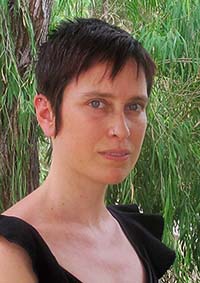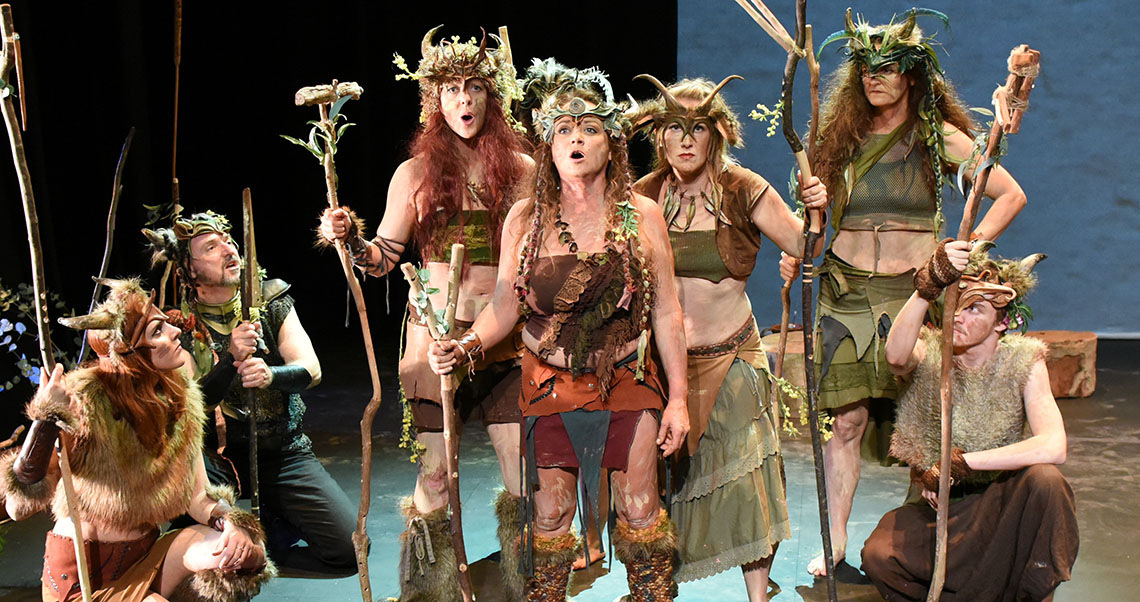
Vahri McKenzie – Creative Practice in Academia
 Vahri McKenzie is an arts and humanities lecturer and lives in Bunbury, a regional city two or three hours out of Perth. She is also a maker of performance and installation artist and short-fiction writer. Her research interests include artistic responses to science and technology, creativity, and dance. I wanted to include a writer living outside the Perth metro area and also someone who is a creative arts academic, and in Vahri I found both. Like all the interviews I’ve posted so far, this is a continuation of an unfinished conversation.
Vahri McKenzie is an arts and humanities lecturer and lives in Bunbury, a regional city two or three hours out of Perth. She is also a maker of performance and installation artist and short-fiction writer. Her research interests include artistic responses to science and technology, creativity, and dance. I wanted to include a writer living outside the Perth metro area and also someone who is a creative arts academic, and in Vahri I found both. Like all the interviews I’ve posted so far, this is a continuation of an unfinished conversation.
How has living in Bunbury influenced your work? I think that living in Bunbury has enhanced the multi-disciplinary nature of my work, because, with fewer people in general, artists tend to work across a number of fields. This is exciting but can also make it hard to fill in forms that put people and practices in boxes.
What are you working on at the moment? The work of an artist-scholar has a long tail, so whilst my biggest recent creative project Bakkhaiis complete (see a review here here), I’m now working on several papers that draw out the creative research enquiries which generated the work, such as the use of metaphors to structure collaboration. This year, amongst other projects, I’ll make Narrowcastfor Bunbury Regional Art Galleries, a durational live art installation that will install a radio studio in a gallery space and ‘narrowcast’ improvised speech during gallery opening hours for one week.
We started a conversation about representation and cultural misappropriation at the AAWP conference. Is this a topic that comes up with your students? It is an important topic. A recent Arts Honours graduate addressed the question of cultural appropriation in her creative arts thesis that created an ecological puppet show. She engaged with local Aboriginal organisations but was careful to draw on ‘universal’ myths of hybridity for inspiration. This project, by Sky River, has received funding from County Arts WA for a full production this year.
My own view is that cultural appropriation is damaging in places and cultures that haven’t been penetrated by globalisation. Many cities of the West are global cities, and to my mind it doesn’t make sense to try and ‘un-mix the paint’. Australians have a particular responsibility to respect Aboriginal cultures that maintain, renew and create practices and the work they identify as unique. But I support engagement, not avoidance.
I must be prepared to work very long days and weekends and during ‘holidays’ to meet my obligations while pursuing my passions.
.
What should prospective creative writing students consider when they are looking for a university or supervisor? I think a good undergraduate creative writing course will combine practice of the craft with reading literature as well as other communications, cultural studies and humanities topics. Specialisation should occur after a broad arts education, so that you have something interesting to write about! Also, I favour positioning creative writing as a creative practise amongst others, with much to inform its innovation of form and methods from other arts. This becomes particularly important at a postgraduate level, where writers must consider their creative endeavours through a research lens.
What are the benefits and challenges of being both an academic and a creative artist? This is a delicate and precarious balance. The great advantage is that I can spend time on creative projects that interest me, and do so without having to worry about how I’ll feed my family, because I draw a salary. But it is a Mephistophelian bargain because they extract their pound of flesh (to mix my Renaissance playwright metaphors) with long teaching hours and burdensome administration. That means I must be prepared to work very long days and weekends and during ‘holidays’ to meet my obligations while pursuing my passions. There is also the challenge of adapting my efforts to meet the changing fashions of how creative work is recognised and rewarded.

I’ve always wondered how people who are multi-disciplinary artists choose what to work on and when. Does it happen organically or is there a conscious process where you prioritise projects? I’m often inspired by my collaborators; for example, the work mentioned above, Narrowcast, came about after working with my co-creator on another project and discovering her incredible facility for talking bullshit ad infinitum, which led me to wonder what it is that allows a person’s thoughts to manifest regularly and easily as spoken words, and what might happen if this capacity is placed under the duress of durational performance. Other decisions are more contingent and respond to opportunities, and, often, the kind of work that will be rewarded by my employer.
What is the art scene like in the South-West? There are plenty of opportunities for artists in the South West, with many excellent art galleries, a number of performance venues, and the independent Margaret River Press. However, it can sometimes feel far away; the joke goes that it is much further when you’re travelling south than it is when you’re heading north, making it really hard for people from Perth to reach us. A high-speed train would connect the cities of Perth and Bunbury and enable much more engagement, to the benefit of both.
Who are your favourite writers? ‘Favourites’ have seasons. As a young woman I loved and wanted to be Angela Carter. I was inspired and provoked by Vladimir Nabokov. In the last decade no one has given me pleasure like the novels and essays of Siri Hustvedt, and Anne Carson. In recent times I’ve enjoyed the essay-ish fiction-y work of Rachel Cusk, Ben Lerner, Sheila Heti and Maggie Nelson.
Who are some of the other artists, writers, people who influence your creative works and research? I most enjoy writers whose work is hard to categorise, particularly those that find new forms and that push against the cultural dominance of realist narrative.
I’m endlessly inspired by ancient Greek myth, thought, drama and art. These cultural traces and artefacts are so ancient they’ve been shorn of rough edges, they’re invisibly embedded in my own culture, I feel I can call them my own to play with, and they’re robust enough to withstand my tinkering.
What’s next? I’m working with an editor at Routledge towards an edited collection of scholarly and practitioner-centred writing on embodiment in community ensembles. This draws together my interests in artistic cross-fertilisation, and the significance of embodiment (think sensory and somatic information, whole-organism experience) in creativity. Community ensembles in this context can be any communities of practice, like writing groups. Sometimes I worry that I might be a collaboration-fascist, but I really do believe that ‘doin’ it together’ is the way to survive! So if you have a project idea that might fit here, get in touch.
Vahri’s website: http://vahrimckenzie.com.au
Happy International Women’s Day!





